




 |
   |
 |
|
Philippe Besombes Besombes-Rizet Bethan Better Than Ezra |
Bettie Serveert The Bevis Frond Bi Kyo Ran |
Bible Black Brice Randall Bickford Big Sir |
Big Sleep Big Star Biirdie |
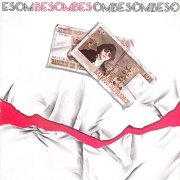 |
Esombeso [a.k.a. Ceci est Cela] (1976/79, 36.39) ***/TGéantPawa 1 Ceci est Cela Seul |
Current availability:
Mellotron used:
Much confusion surrounds Philippe Besombes' Esombeso, a.k.a. Ceci est Cela. After working with Jean-Louis Rizet on Pôle, he released the four-track album in 1976 before making two records with Hydravion, only to reissue it three years later under a new title, adding disco spoof Princess Lolita to the beginning of the disc. Confused? Just to help matters along, now-defunct Israeli label MIO's greatly-expanded CD reissue mis-spells the album title (Cesi est Cela) and adds a letter to 'Princesse', confusing things yet further by sequencing the disc so that Princess Lolita is only accessible by winding back from the beginning of track 'one' to hear it at all. Once you get past that horror/joke/selling point, most of the album, unsurprisingly, largely consists of atonal electronic hums and squawks, although the odd tuneful bit sticks its head above the ramparts in paces. As with Pôle (below), this isn't an album for the faint-hearted, or the 'standard' EM fan (aren't these one and the same thing?).
Obvious Mellotron on one track only, with an ominous string part on Géant that forms the bedrock of the piece; while it's possible that the screechy noises on a couple of other tracks are Mellotron-related, it seems unlikely. So; avant-EM. Isn't that how it should be? Only borderline-listenable in places, to be honest, but one decent Mellotron track for the (possibly should be) committed.
See: Hydravion
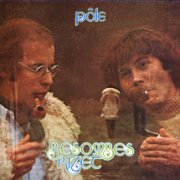 |
Pôle (1975, 75.49) ***½/TT½Haute PressionEvelyse Armature Double Lundi Matin Montélimar Rock à Montauban Synthi Soit-il |
Current availability:
Mellotron used:
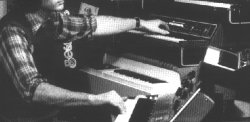 |
Philippe Besombes and Jean Louis Rizet were French experimental musicians who only properly collaborated once, on 1975's Pôle (named for the independent label on which it was released), a double album of electronic music, sometimes cited as the best French album in the genre. Despite superficial similarities, don't think Tangerine Dream here; Besombes-Rizet were far more percussive and the music has a completely different feel - comparisons with another French electronic duo, Heldon, are more relevant. Much of the music spread across the album's four sides is quite harsh, albeit interesting; lush melodies and Mellotron soundscapes are notable by their absence, substituted by brittle synth work and manic percussion.
I've really no idea who plays what here; a whole raft of gear was used, including Rhodes (principally on Evelyse), Mellotron M400, MiniMoog, ARP Odyssey and various EMS equipment, mostly to good effect, with several modular-sounding percussive patches finding their way onto various tracks. On the Mellotron front, Haute Pression features male choir throughout much of its length, plus a smattering of strings, but on the side-long Armature Double the duo go completely overboard, utilising Mellotron vibes and percussion, with some vicious tympani and tubular bell work (!), after a rich string intro, leaving merely a brief burst of strings on Montélimar's intro.
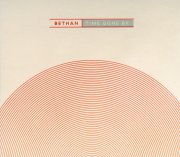 |
Time Gone By (2014, 42.27) ***/T½ |
|
| Low Expectations Beside Me In Our Paris Honeymoon I Need a Pill to Help Me Sleep Out West We Are All Expiring |
Greedy Songbird Melancholia Don't Be Afraid to Lie to Yourself |
|
Current availability:
Mellotron used:
Dallas-based Bethan are (were?) apparently the brainchild of Jessi James Hall, whose lone album, 2014's Time Gone By, channels pre-psych lounge/cabaret music, for better or worse. Better tracks include opener Low Expectations and We Are All Expiring, but you've really got to be into this stuff, I think.
Kevin Howard plays Klearlight Studios' M400, with a polyphonic flute part on Out West, wobbling at the end, and a clicky flute line on Melancholia, both clearly real, even without knowing the studio owns a machine. Incidentally, it's not only credited as 'M400', but studio co-owner Jay Jernigan is even credited with engineering it.
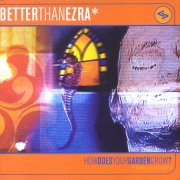 |
How Does Your Garden Grow? (1998, 58.26) **/½ |
|
| Je Ne M'en Souviens Pas One More Murder At the Stars Like it Like That Allison Foley Under You Live Again Happy Day MāMā |
Pull Particle Beautiful Mistake Everything in 2's New Kind of Low Low Coma Waxing or Waning? |
|
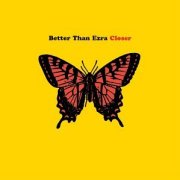 |
Closer (2001, 42.44) ***/TT½ |
|
| Misunderstood Extra Ordinary Closer Rolling A Lifetime Recognize Sincerely, Me Get You in |
Briefly Juarez I Do |
|
Current availability:
Chamberlin/Mellotron used:
Although they apparently started life as a proto-Americana outfit in the late '80s, by their fourth album, 1998's How Does Your Garden Grow?, Better Than Ezra had turned into a whiny indie act, Kevin Griffin's vocals being particularly worthy of opprobrium. It's saying something when a song as weak as the two-part New Kind Of Low can be hailed as the album's highlight, although its first part, Low, provides a much-needed burst of energy just when you'd given up all hope. Griffin is credited with Chamberlin, spelt properly for once (hurrah!), but amongst a cluttered production, with real strings and something called a 'metasynth', the only places it's at all obvious are a rude outburst of brass in the middle of Happy Day MāMā (dunno why the accents) and a brief flute part (possibly a rhythm track?) at the beginning of the next song, Pull.
Their follow-up, 2001's Closer, is better than its predecessor, although no classic, better tracks including Extra Ordinary (hopefully ironic sample lyric: "Just like that AC/DC song/I wanna shake you all night long"), the title track and the funk/blues of Recognize. The very first sound we hear is someone (Griffin again?)'s Mellotron (Chamberlin?) flutes on Misunderstood, with a thin string line on Rolling, polyphonic strings on A Lifetime, Get You In, Briefly and Juarez and more flutes on Recognize, making this a far better tape-replay proposition than its predecessor.
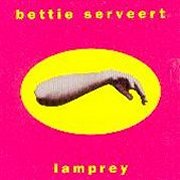 |
Lamprey (1995, 49.27) ***/T |
|
| Keepsake Ray Ray Rain D. Feathers Re-Feel-it 21 Days Cybor*D Tell Me, Sad Crutches |
Something So Wild Totally Freaked Out Silent Spring |
|
Current availability:
Mellotron used:
Bettie Serveert (Bettie Serves, from a Dutch TV show) coalesced properly in 1990, after a failed dry-run in the mid-'80s. Although usually described as 'indie', their sound, at least on their second album, 1995's Lamprey, has more than a touch of the Neil Youngs about it, if you can imagine a female-voiced Neil transplanted to 1990s Holland. It's actually pretty good, particularly opener Keepsake, although a bit of dead wood could've been trimmed with no ill-effects.
One (uncredited) Mellotron track, with flutes and strings on D. Feathers from drummer Berend Dubbe, to reasonable if not earth-shattering effect. Incidentally, Mr. Dubbe left after their fourth album and has gone on to form the retro- and Mellotron-happy Bauer. So; Lamprey: much better than expected, if slightly overlong and not really worth it for its Mellotron input.
See: Bauer
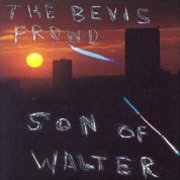 |
Son of Walter (1996, 79.26) ***½/T½ |
|
| Plastic Elvis Beautiful Sister Red Hair You Saw Me Comming Barking or False Point Blues Forgiven All Hope is Gone With You Away Dead Man Sitting on a Train |
It's Not Like You Garden Aeroplane Trap Driven Away Raining on TV Requiem Winner's Way Goodnight From the Band |
|
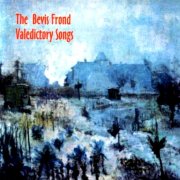 |
Valedictory Songs (2000, 71.29) ****/½ |
|
| Godsent By the Water's Edge Early Riser Let Them Beautify You High on a Downer Artillery Row We Are the Dead Portobello Man Can't Feel it |
Sugar Voids Back on My Star The Speed of Light Old School Rock Child Living in Real Time China Fry Confession |
|
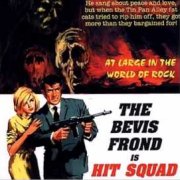 |
Hit Squad (2004, 78.40) ***½/T |
|
| All Set? Dragons Through the Hedge I Feel Bad About You Hit Squad Alpha Waves Way Back When Mission Completed Flood Warning |
Your Little Point Crumbs Doing Nothing High Point It's a Gut Thing No Attempt Your Secret Doors Am I Burning? Fast Falls Eventide |
|
Current availability:
Mellotrons used:
I'm ashamed to admit that, prior to this, I've never actually heard a Bevis Frond album all the way through, even though I saw him/them live years ago. The Bevis Frond is essentially Walthamstow native and Countdown regular Nick Saloman (don't worry about this stuff if you're not a native Brit), who writes, sings and plays guitar on everything, ploughing his own lonely psychedelic furrow through the murk of what is laughably known as The Music Biz. In his own quiet way, he's a real star, refusing to bow to 'commercial reality' (a.k.a. 'The Man') while managing to keep his head above water far enough to carry on making his own unique brand of psychedelic guitar-driven rock. A whole slew of his albums used to be available on London-based Reckless Records' (legendary small second-hand chain) own imprint, but the rights seem to've long-reverted to his own label, Woronzow, which also seems to be linked to excellent obscuro fanzine The Ptolemaic Terrascope (with me so far?).
Son of Walter is something like Nick's thirteenth album in nine years (!) and it's a double (although I'm aware that several of his early releases consist of older material); believe me, this guy doesn't mess about, although his output has slowed of recent years. It covers several different bases, from the acoustic singer-songwriter fare of Winner's Way and Dead Man Sitting On A Train, through the grunge madness of Barking Or False Point Blues to the (short) side-long killer jam of Garden Aeroplane Trap. It's this last that interests us the most, as Nick (who plays everything, by the way) overdubs tons of Mellotron flutes and strings—I'm told he owns an M400. In fact, there's so much on the twelve-minute track that it actually gets a full T½ rating, despite not being heard anywhere else.
Four years on and Nick released Valedictory Songs, potentially the band's last album, although, thankfully, this has turned out not to be the case. Another double, it's full of the curiously affecting likes of By The Water's Edge, Artillery Row and the wry Portobello Man, alongside the more full-on fare of slightly Cardiacs-esque opener Godsent, We Are The Dead and Can't Feel It. Despite being credited with the mighty Mellotron, it's pretty much absent here, certainly in comparison to Son of Walter, with naught but high flutes, doubling the restrained Hammond on High On A Downer. 2004's Hit Squad (love the retro film poster sleeve) is another typical Frond release, albeit an extremely long one, shifting stylistically from gentle acoustic (with trumpets) opener All Set? through the punky hard rock of Dragons and the classic Frond wig-out of Through The Hedge, although the album's default setting is fragile-voiced psychedelia, as you might expect. Nick plays what I presume are genuine Mellotron flutes on eleven-minute closer (and album highlight) Fast Falls Eventide, with random notes flitting in and out of the mix.
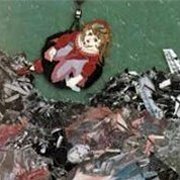 |
Parallax (1983, 38.29) ****/TTTSilent RunningPrediction Suite Ran Prologue: The Sky Distorting Too Much A Klaxon of Dr. Strange-Love Parallax Company Great Parallax Epilogue: Crimson Children |
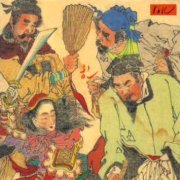 |
Ran: Live Vol. 3 (1994, recorded 1983, 53.42) ***½/T½Psycho (Part I)Warning Suite "Ran" Double |
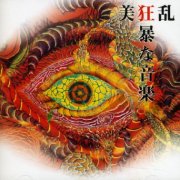 |
Kyobo Na Ongaku [a.k.a. A Violent Music] (1998, 53.18) ***½/TT |
|
| A Violent City Feet on the Ground A Violent Perty A Violent Fort A Man of Hand to Mouth Creep Funk A Violent Nightmare |
||
Current availability:
Mellotrons used:
I believe noted Japanese King Crimson imitators Bi Kyo Ran's second album, 1983's Parallax, is fairly typical of their oeuvre. Opener Silent Running isn't actually that great, starting off in arena rock territory, although it improves over its near-eight minute length, but Prediction is a lot better, operating in laid-back 'I Talk to the Wind' mode, with little Mellotronic interjections here and there. Side two's Suite Ran is definitely the album's highpoint, opening with Mellotron flutes before lurching into a Crimsonesque riff that sets the tone for the rest of the track. Mellotron strings in (I think) part 3, Great Parallax, which pounds the listener into submission with a hypnotic cyclic riff for seven or eight minutes, with flutes and (real) violin in the following gentle Epilogue: Crimson Children (are you sure?!). This is pretty fine stuff, actually, if rather lacking on the originality front, but since when was that necessarily a problem?
1987's 1978-79 recording, Live Volume I: Fairy Tale, features Masumi Kuno on Mellotronically-voiced string synth, but Ran: Live Vol. 3, recorded in '83, has the real deal, taking the form of one short(-ish) piece and three very lengthy ones, giving us a good idea what the band sounded like on stage at the time. Opener Psycho (Part I) sounds a lot like exactly what it is - a Japanese band heavily influenced by King Crimson - while Warning opens with a several-minute quiet section, followed by something best described as 'noisy Crimson' and a fittingly Japanese-influenced part, before slipping back into 'noisy Crimson' mode to finish off, the last two tracks fitting broadly into the same mould. Although Kunio Suma and Masaaki Nagasawa are both credited with Mellotron, their regular roles as guitarist and drummer make the Mellotron use fairly sparse, with a flute solo opening Warning, reiterating throughout its first section, closer Double having an even more overt flute part a few minutes in, although there's nothing to be heard on Suite "Ran", even though it's present on the studio version.
Well, in fifteen years, it seems that Bi Kyo Ran haven't changed noticeably, still sounding an awful lot like King Crimson. Kyobo Na Ongaku, or A Violent Music, is well-named, slightly resembling Crimso's Starless & Bible Black in its relentlessness and angularity. It's difficult to pinpoint 'best tracks' on an album like this, as there's little stylistic difference between most of them; suffice to say, if you like their previous work, there's a good chance you'll like this. Mellotron strings on most tracks, from Noriyuki Kamiya, though never that much and I'm not entirely convinced they're real. As so often, though, it's devilishly hard to tell and certainly on opener A Violent City, it sound 'wobbly' enough to possibly be genuine. Kamiya's technique seems to consist of waiting until maybe 40% of the way into each song, then bringing in some nicely Crimsonesque, ever-so-slightly dissonant chords, which are played for about thirty seconds before he switches to another instrument, stuck to on every highlighted track above.
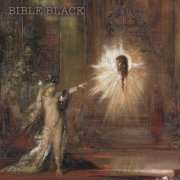 |
Bible Black (2012, 44.40) ****/TMistVampires Blood Watershed Helix Wuthering Heights Hydra In the Dark of Madness |
Current availability:
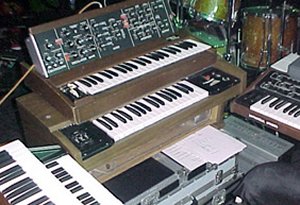 |
Mellotron used:
Bible Black's eponymous 2012 debut rather unsurprisingly owes a major debt to '70s King Crimson, although far less so than several Japanese copycat prog outfits I could name. Effectively an instrumental trio (the keyboard player, calling themselves Rose, doubling on guitar), the music is (thankfully) far less ELP-like than you might expect, while the Crimso influence only crops up on occasion (Hydra being a notable example), other obvious pointers including Camel's melodiousness and anyone who ever experimented with 'Eastern' scales (fair enough, given their location). Despite some tracks' heaviosity, they avoid the prog-metal label, to their credit, while throwing a few fusion moves around in places, particularly at the end of Wuthering Heights (no, not that one).
Although photos exist of this lot sporting a Chamberlin M1 (right), we're apparently hearing a 'Mellotron Archives' MkVI machine here, played by a guesting second keys man calling himself Iwanov, who concentrates exclusively on vintage 'boards. Despite several false alarms, the only obvious use is some strident strings work on closer In The Dark Of Madness, although it would've fitted in nicely elsewhere. Overall, then, Bible Black's a confident debut, if a little derivative in places. More, please.
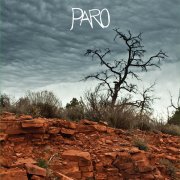 |
Paro (2016, 38.34) **/0Fatal VisionDesert Orchards Heels on the Street The First Grain Civilized Death Like the Company Barricades (Way Home) 1986 Again |
Current availability:
Mellotron/Chamberlin used:
Brice Randall (a.k.a. Randy) Bickford released several albums as The Strugglers, before switching to his own (full) name for his 2011 debut, Brice Randall Bickford. 2016's Paro was his next release, a rhythmically- and melodically-unadventurous indie/singer-songwriter crossover album, at its least dull on Like The Company, perhaps, otherwise sticking solidly to the regulation half-note/minim beat so beloved of The Velvet Underground's distant progeny.
Alex Lazara is credited with Fidelitorium Studios' Chamberlin on three tracks, but I'd love to know what he actually used it for. Whatever he added to Desert Orchards is hidden behind real strings and a Solina, Barricades (Way Home) has no obvious input and even closer 1986 Again's sparse arrangement refuses to divulge Lazara's secret weapon. He's also credited with what turns out to be inaudible Mellotron on Heels On The Street, most likely sampled anyway. The only reason I haven't slung this into Samples etc. is that the recording location is known to own a Chamby M1.
Big Big Train (UK) see: |
 |
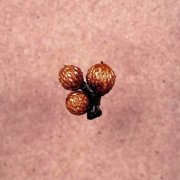 |
Und die Scheiße Ändert Sich Immer (2006, 53.02) **½/T |
|
| Blutrausch (Smooth Interlude) Rejoice the Rig The Freeways of My Mind Song Bong Blue Hey, Soldier Saticoy Street 'Cause That Shit's Too Evil (and She's Just a Gangsta Bitch) Get Off the B |
Saxophone Pelo de Elote I Lie Down Hammer on Pull Off Eastside Westside Blue Speedy's Rejoinder |
|
Current availability:
Mellotron used:
Big Sir are essentially the duo of bassist Juan Alderete (Racer X, The Mars Volta) and vocalist Lisa Papineau, 2006's Und die Scheiße Ändert Sich Immer (And the Shit Always Changes) being their second album. I'm not honestly sure where they're coming from on this, most tracks consisting of drums, bass and ethereal vocals, with little real harmonic content, other instruments relegated to supporting roles. I'll admit it's original, but is it any good?
Matthieu Lesenechal plays Mellotron on opener Blutrausch (Smooth Interlude), his cello line being the first sound heard on the record, with a skronky flute part later in the track. I'm not convinced it's real, but nor am I convinced it isn't. I can't say I got much out of this album, sadly, but its one Mellotron track is worth hearing, if you get the chance.
 |
Bluebell Wood (1971, 45.01) ***/TDeath of a HopeOdd Song Free Life Aunty James Saint & Sceptic Bluebell Wood Watching Love Grow When the Sun Was Out |
Current availability:
Mellotron used:
The Welsh Connection ran deep in Big Sleep, who were, essentially, a renamed Eyes of Blue, the new name chosen by a record company exec, although they never played under it and split soon after. 1971's low-key Bluebell Wood is one of those psych-into-prog albums that were fairly prevalent at the time, later described by keyboard player Phil Ryan as, "Making Lou Reed look like the Bay City Rollers!" While not half as bad as that suggests, nor is it the most exciting thing you're ever going to hear, the title track being the nearest it gets to 'prog', while jaunty closer When The Sun Was Out would've improved the album by its absence.
Someone (probably Ryan) plays Mellotron on the title track, with a pleasant string part that enhances the song nicely without being overbearing (sadly), although the strings on a couple of other tracks are clearly real. Various Eyes of Blue/Big Sleep alumni went on to bigger and better: Ryan to Man, vocalist Gary Pickford-Hopkins to Rick Wakeman (OK, maybe just bigger), while drummer John 'Pugwash' Weathers played on most of Gentle Giant's albums before becoming Man's longest-serving drummer. Now Bluebell Wood's available on CD, do you bother? It's a pleasant enough effort, but without any really outstanding material and with so little Mellotron, I'd leave it on your 'B' list if I were you.
See: Eyes of Blue
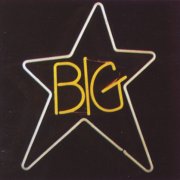 |
#1 Record (1972, 37.09) ****½/T½ |
|
| Feel The Ballad of El Goodo In the Street Thirteen Don't Lie to Me The India Song When My Baby's Beside Me My Life is Right |
Give Me Another Chance Try Again Watch the Sunrise ST 100/6 |
|
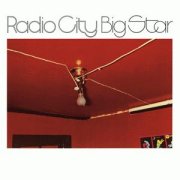 |
Radio City (1973, 36.11) ****/T |
|
| O My Soul Life is White Way Out West What's Going Ahn You Get What You Deserve Mod Lang Back of a Car Daisy Glaze |
She's a Mover September Gurls Morpha Too I'm in Love With a Girl |
|
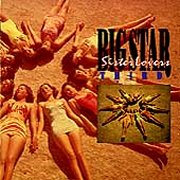 |
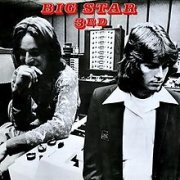 |
Sister Lovers: the Third Album (1978, 50.30/55.15) ***½/T |
|
| Stroke it Noel Downs Femme Fatale Thank You Friends Holocaust Jesus Christ Blue Moon Dream Lover You Can't Have Me |
Big Black Car Kizza Me For You O Dana Nightime Whole Lotta Shakin' Going on Kanga Roo Take Care |
||
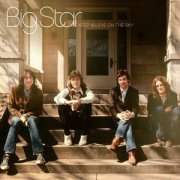 |
Keep an Eye on the Sky (2009, recorded 1968-75, 300.24) ****/TT |
|||
| Psychedelic Stuff All I See is You Every Day as We Grow Closer (orig.mix) Try Again (early version) Feel The Ballad of El Goodo In the Street (alt.mix) Thirteen (alt.mix) Don't Lie to Me The India Song (alt.mix) When My Baby's Beside Me (alt.mix) My Life is Right (alt.mix) Give Me Another Chance (alt.mix) Try Again Gone With the Light Watch the Sunrise (single) ST 100-6 (alt.mix) The Preacher (excerpt) In the Street (alt.single mix) Feel (alt.mix) The Ballad of El Goodo (alt.lyrics) The India Song (alt.version) |
Country Morn I Got Kinda Lost (demo) Back of a Car (demo) Motel Blues (demo) There Was a Light (demo) Life is White (demo) What's Going Ahn (demo) O My Soul Life is White Way Out West What's Going Ahn You Get What You Deserve Mod Lang (alt.mix) Back of a Car (alt.mix) Daisy Glaze She's a Mover September Gurls Morpha Too (alt.mix) I'm in Love With a Girl O My Soul (alt.version) She's a Mover (alt.version) Daisy Glaze (reh.version) I am the Cosmos You and Your Sister Blue Moon (demo) Femme Fatale (demo) |
Thank You Friends (demo) Nightime (demo) Take Care (demo) You Get What You Deserve (demo) Lovely Day (demo) Downs (demo) Jesus Christ (demo) Holocaust (demo) Big Black Car (alt.demo) Manana Jesus Christ Femme Fatale O, Dana Kizza Me You Can't Have Me Nighttime Dream Lover Big Black Car Blue Moon Holocaust Stroke it Noel For You Downs Whole Lotta Shakin' Goin' on Kanga Roo |
Thank You Friends Take Care Lovely Day Til the End of the Day (alt.mix) Nature Boy (alt.mix) When My Baby's Beside Me My Life is Right She's a Mover Way Out West The Ballad of El Goodo In the Street Back of a Car Thirteen The India Song Try Again Watch the Sunrise Don't Lie to Me Hot Burrito #2 I Got Kinda Lost Baby Strange Slut There Was a Light ST 100-6 Come on Now O My Soul |
|
Current availability:
Mellotrons used:
Big Star formed in Memphis when Alex Chilton (ex-Box Tops, of The Letter fame) joined Chris Bell, Andy Hummel and Jody Stephens in Ice Water, changing their name during their initial writing sessions. They played what was, for the early '70s, deeply unfashionable intelligent pop, Chilton's soul influence creeping in here and there, leading to the group being included in the legendary 'B's; Beatles, Beach Boys, Badfinger, Byrds... There honestly isn't a bad song on either #1 Record or Radio City, so yet another great band ignored during their lifetime have gone on to, if not fortune, at least posthumous fame.
#1 Record doesn't put a foot wrong, from the opening pure pop of Feel, through rockier numbers (Don't Lie To Me, When My Baby's Beside Me), or ballads (Give Me Another Chance, Try Again). Plenty of other writers have written about this album far more eloquently than I ever could, so I'll concentrate on my usual speciality. Bassist Andy Hummel's only solo composition on the album, India Song, is a beautiful acoustic number, with a richly original Mellotron flute part, played by him, making it one of the album's highlights (against stiff competition), while Give Me Another Chance has some rather unsubtle strings from friend/studio owner Terry Manning, although the end result is still well worth the effort.
By Radio City, Bell had left, producing demos that would appear as I am the Cosmos long after his death in a car crash in 1978. Big Star seemed to function just as well as a trio, at least in the studio, as live dates were apparently a disaster. The songwriting is still fabulous, with songs like Way Out West and You Get What You Deserve equalling those of their influences. Chilton on Mellotron this time (thanks, Chris), only obviously heard on one track; opener O My Soul has some stabbed string chords, with some slurred pitchbend work at the end; despite a couple of other 'possibles', it's the only definite Mellotron track here.
Hummel departed after the album's release, leaving the remaining duo to record another album with a new bassist, although The Third Album, sometimes known as Sister Lovers, wasn't released until 1979, long after the band's demise. It's a messy affair, to be honest, every different release seemingly containing a different track selection, the one above being from the UK 1987 Dojo/Castle vinyl version, which claims to contain every track recorded at the sessions. It's unsurprisingly less focussed than their first two albums, but there are still many excellent tracks, if little of quite the same quality as before. The Mellotron on Kanga Roo could have been played by either Chilton or producer Jim Dickinson, opening with a wobbly flute melody, before some string chords in the verses; note the alternate sleeve above, with (reversed) Mellotron surprisingly in shot.
2009's four-disc Keep an Eye on the Sky answers the question I'm not sure anyone asked: "How do you fill a four-disc box set of a band who only ever released two albums in their lifetime?" And the answer is... Demos, alternate mixes (and occasionally versions) and a live disc. In some ways, you could buy this instead of the studio albums, as both #1 Record and Radio City are represented, track-by-track, with a mixture of the original versions and demos or alternate takes, while all of Sister Lovers is here, albeit not in sequence. The set touches on Chris Bell's I am the Cosmos, too, without in any way removing the committed fan's need to buy it. Of course, committed fans are going to buy this on top of the original albums, although the alternate mixes really aren't that different, while acoustic demos can't match the studio versions for intensity. The live disc (recorded in January '73) is from the post-Bell era, but is still worth hearing for the faithful.
On the Mellotron front, disc one has several relevant tracks, including the flutes on both the alternate mix and version of The India Song and the strings on alternate mix of Give Me Another Chance. The really interesting tracks, though, are the previously-unavailable acoustic Gone With The Light, with a nice flute part and the infuriatingly-edited excerpt from The Preacher, with strings that almost convince the listener they're real. The other three Mellotron tracks are already available, being the one each from Radio City (O My Soul) and Sister Lovers (Kanga Roo) and the title track from Bell's album, leaving precisely two unheard tracks over four discs. As a sad postscript, halfway through listening to Keep an Eye on the Sky, I heard that Alex Chilton had died at the age of fifty-nine, mere months after producer Jim Dickinson's own demise.
See: Chris Bell
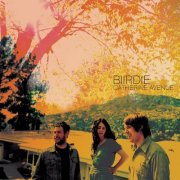 |
Catherine Avenue (2008, 47.48) ***/T |
|
| Catherine Avenue LA is Mars Who Were You Thinkin' of Him Life in a Box Estelle I'm Gonna Tell You Something Petals |
Careless & Unconcerned I Wish I Could've Been There Careless Reprise |
|
Current availability:
Mellotron used:
Biirdie hail from LA suburb Glendale, although their sound on their second and last album, 2008's Catherine Avenue, has more in common with, say, David Bowie than anyone especially Californian. I'm sure they were also listening to other, lesser-known British singer-songwriters from the era, too, the end result being at its best on the opening title track and the lengthy, raga-ish Careless & Unconcerned.
Wil Masisak plays his own M400, with flutes, cellos and strings (and vibes? Clarinets?) on Petals. I'm not sure if Biirdie were a decade too early, or too late, but you feel this slightly overlong album could've done better at another time.